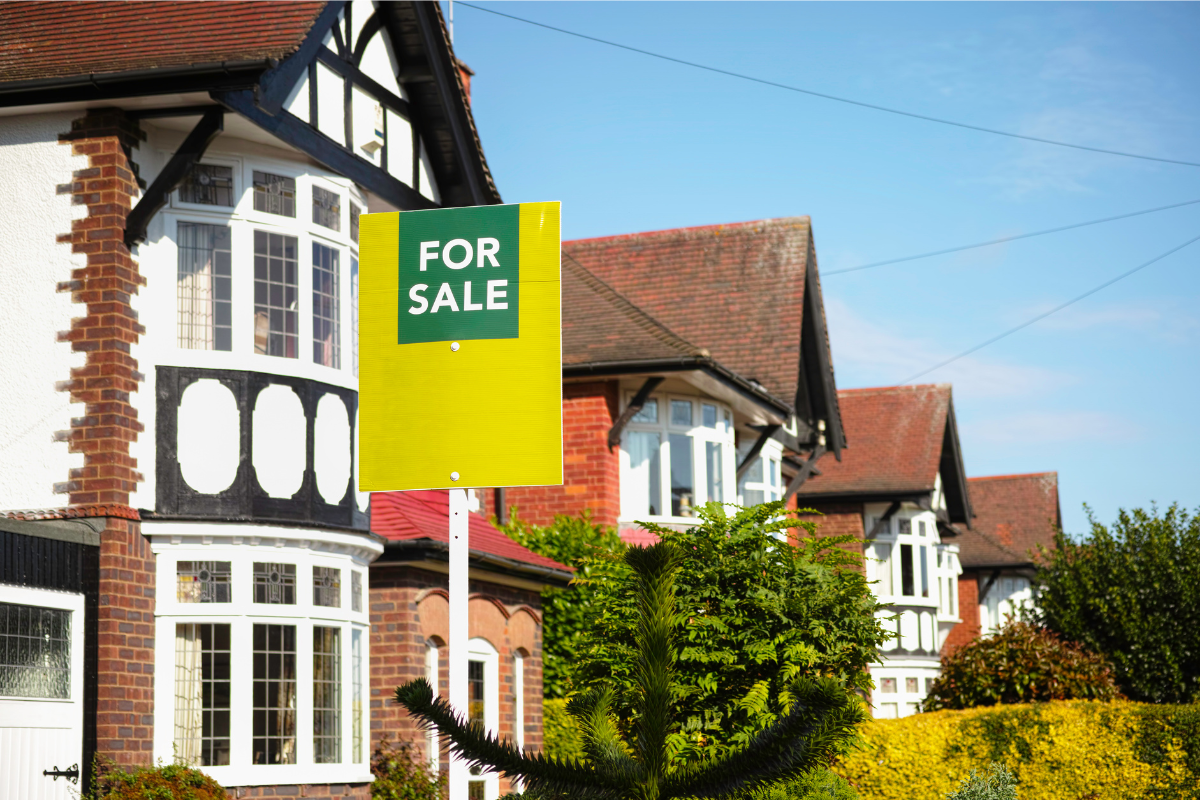Selling your home can feel overwhelming, but proper preparation is the key to maximizing your return on investment and attracting serious buyers. The difference between a home that sells quickly at asking price and one that lingers on the market often comes down to how well it’s been prepared for sale.
When you invest time and effort into presenting your property at its best, you’re not just improving aesthetics—you’re creating an emotional connection with potential buyers. A well-prepared home signals to buyers that the property has been cared for, reducing their concerns about hidden problems and maintenance issues.
The preparation process doesn’t have to break the bank either. Many of the most impactful improvements focus on cleanliness, organization, and minor repairs rather than expensive renovations. By following a strategic approach to home preparation, you can increase your property value, reduce time on market, and potentially receive multiple offers.
Decluttering and Depersonalizing Your Space
Creating a blank canvas is essential for allowing buyers to envision themselves living in your home. When spaces are cluttered with personal belongings, buyers struggle to see past your lifestyle to imagine their own.
Start by removing excess furniture from each room. The goal is to make spaces appear larger and more open. Pack away about one-third of your belongings, focusing on items that crowd surfaces, block natural light, or make rooms feel cramped.
Personal photographs, collections, and unique décor items should be stored away. While these items make your house feel like home to you, they can be distracting to buyers. Replace personal artwork with neutral pieces or simple mirrors that reflect light and create the illusion of more space.
Don’t forget about closets and storage areas. Buyers will open these spaces, and overstuffed closets suggest inadequate storage. Remove seasonal items and donate clothes you no longer wear to create an impression of ample storage throughout the home.
The key is achieving balance—you want the home to feel lived-in and welcoming without being overly personal or cluttered.
Deep Cleaning Every Surface
A spotless home signals excellent maintenance and care to potential buyers. Deep cleaning goes beyond your regular housekeeping routine and addresses areas that might typically be overlooked.
Create a systematic approach by cleaning from top to bottom in each room. Dust ceiling fans, light fixtures, and crown molding before moving to furniture and finally floors. Pay special attention to kitchens and bathrooms, as these areas significantly impact buyer perception.
In the kitchen, clean inside appliances, scrub grout lines, and ensure cabinet interiors are spotless. Remove any odors from garbage disposals and check that all surfaces shine. For bathrooms, re-caulk if necessary, clean shower doors thoroughly, and ensure fixtures gleam.
Windows deserve special attention since they affect both natural light and curb appeal. Clean both interior and exterior surfaces, and don’t forget window sills and tracks.
Carpets should be professionally cleaned, and hardwood floors should be polished. Consider renting a steam cleaner for tile floors to restore their original brightness.
During the showing period, maintain this level of cleanliness by doing quick touch-ups before each showing and keeping cleaning supplies handy for immediate attention to any issues.
Essential Repairs and Updates
Addressing necessary repairs before listing prevents buyer concerns and reduces negotiation obstacles. Focus on repairs that affect safety, functionality, and visual appeal.
Structural and Safety Priorities
Start with the most critical repairs that could derail a sale. Foundation cracks, roof damage, and electrical issues top this list. These problems raise red flags during inspections and can cause buyers to walk away entirely.
Plumbing repairs should be addressed promptly. Fix leaky faucets, running toilets, and any visible water damage. Water stains on ceilings or walls indicate ongoing issues that buyers will assume are expensive to resolve.
High-Impact Visual Repairs
Patch and paint any holes in walls, focusing on neutral colors that appeal to the broadest range of buyers. Replace broken tiles, fix squeaky doors, and ensure all light fixtures work properly.
Flooring issues are immediately noticeable to buyers. Refinish scratched hardwood floors, replace damaged tiles, and consider replacing worn carpeting with neutral options.
DIY vs. Professional Work
Simple cosmetic repairs like painting, caulking, and minor fixture replacements can be DIY projects. However, electrical work, major plumbing repairs, and structural issues require professional expertise. The cost of hiring professionals for complex repairs is often recovered through higher sale prices and smoother transactions.
Home Staging Techniques
Effective staging highlights your home’s best features while minimizing any shortcomings. The goal is creating inviting spaces that feel both spacious and comfortable.
Furniture Arrangement
Arrange furniture to showcase the natural flow of each room and maximize the sense of space. Create conversation areas in living rooms, ensure clear pathways throughout the home, and avoid pushing all furniture against walls.
In bedrooms, position beds as focal points and add simple, hotel-like touches such as crisp linens and minimal nightstand styling. Remove bulky furniture that makes rooms feel cramped.
Lighting and Ambiance
Good lighting transforms spaces and creates warmth. Replace burnt-out bulbs with higher wattage options where appropriate, and consider adding table lamps to dark corners. Open curtains and blinds during showings to maximize natural light.
Use accessories sparingly but strategically. Fresh flowers, quality throw pillows, and a few carefully chosen decorative items can add warmth without creating clutter.
Creating Emotional Appeal
Stage each room with a clear purpose. Transform spare rooms into functional spaces like home offices or guest bedrooms rather than leaving them empty or using them for storage.
Enhancing Curb Appeal
First impressions form within seconds of a buyer’s arrival, making curb appeal crucial to generating interest and setting expectations for the interior.
Landscaping and Exterior Maintenance
Start with basic lawn care—mow regularly, edge pathways, and remove weeds. Trim overgrown bushes and trees, and add fresh mulch to flower beds for a polished appearance.
Plant colorful flowers in pots near the entrance for an welcoming touch that’s relatively inexpensive. Choose plants that will look good throughout your selling season.
Exterior Repairs and Updates
Clean or pressure wash exterior surfaces, including siding, walkways, and driveways. Repair any visible damage to shutters, trim, or exterior fixtures.
The front door deserves special attention since it’s often featured in listing photos. A fresh coat of paint in an appealing color can make a significant impact. Ensure the doorbell works, and consider updating house numbers if they’re worn or outdated.
Clean windows from the outside, and ensure exterior lighting fixtures are clean and functional. Buyers often drive by properties in the evening, so good exterior lighting enhances nighttime curb appeal.
High-ROI Renovations
While major renovations aren’t always necessary, certain updates can provide excellent returns on investment when done strategically.
Kitchen and Bathroom Updates
These rooms significantly influence buyer decisions and offer some of the best returns on renovation investment. Focus on updates that provide maximum visual impact without complete overhauls.
In kitchens, consider painting cabinets, updating hardware, replacing countertops, or installing a new backsplash. New appliances can also appeal to buyers, particularly energy-efficient models.
For bathrooms, updating fixtures, re-grouting tile, replacing vanities, or adding modern lighting can refresh the space without major construction.
Flooring and Paint Considerations
Fresh paint throughout the home is one of the most cost-effective improvements you can make. Choose neutral colors that complement various decorating styles and make spaces feel larger and brighter.
Flooring updates should focus on high-traffic areas and spaces where current flooring shows significant wear. Hardwood floors typically offer better returns than carpet, while tile works well in bathrooms and kitchens.
Energy Efficiency Improvements
Consider updates that improve energy efficiency, as these appeal to environmentally conscious buyers and can reduce operating costs. Simple improvements might include updating to LED lighting, improving insulation, or installing a programmable thermostat.
Final Steps for Success
Documentation and Transparency
Gather important documents including warranties, maintenance records, and certificates for any recent improvements. Being transparent about the property’s condition builds trust with buyers and can smooth the transaction process.
Consider getting a pre-listing inspection to identify potential issues before they become negotiation points. This proactive approach demonstrates confidence in your property’s condition.
Pricing Strategy
Work with a qualified real estate agent to analyze comparable sales and determine competitive pricing. Proper pricing from the start generates more interest and can lead to multiple offers, ultimately achieving better results than starting high and reducing prices later.

Maximize Your Home’s Potential
Preparing your house for sale requires effort and investment, but the returns—both financial and in terms of a smoother selling process—make it worthwhile. Focus on cleanliness, necessary repairs, and presenting your home in its best light.
Remember that buyers are making both logical and emotional decisions. By addressing practical concerns through proper maintenance and repairs while creating emotional appeal through staging and curb appeal, you position your property to stand out in the market.
Start your preparation process early, prioritize high-impact improvements, and don’t hesitate to consult with real estate professionals who can provide market-specific guidance. With proper preparation, you’ll maximize your home’s selling potential and create a positive experience for both yourself and potential buyers.
FAQ
Q: What is the best time of year to sell a house?
A: The best time to sell a house often depends on your local market, but typically, spring and early summer are popular seasons when buyers are most active. However, specific conditions in your area may also influence the timing.
Q: How much should I spend on renovations before selling my house?
A: It’s essential to focus on cost-effective renovations that provide a good return on investment. Minor kitchen and bathroom updates, fresh paint, and improving curb appeal are usually worthwhile. Consult with a real estate professional for tailored advice.
Q: Should I stage my home before listing it for sale?
A: Yes, home staging can significantly impact how quickly and for how much your home sells. Staging helps buyers visualize the space and presents your home in its best light, making it more appealing.
Q: Do I need to hire a real estate agent to sell my house?
A: While it’s possible to sell your home on your own, hiring a real estate agent can provide valuable expertise, local market knowledge, and assistance with the negotiation and closing process.
Q: How do I determine the right asking price for my home?
A: Determining the right asking price involves researching comparable properties in your area, understanding current market trends, and potentially seeking an appraisal. A real estate agent can also help set a competitive price.
#Images_resource
https://drive.google.com/drive/folders/1sNy1eypcQjt6IinbXw15unmQPxGsAwQv?usp=drive_link









